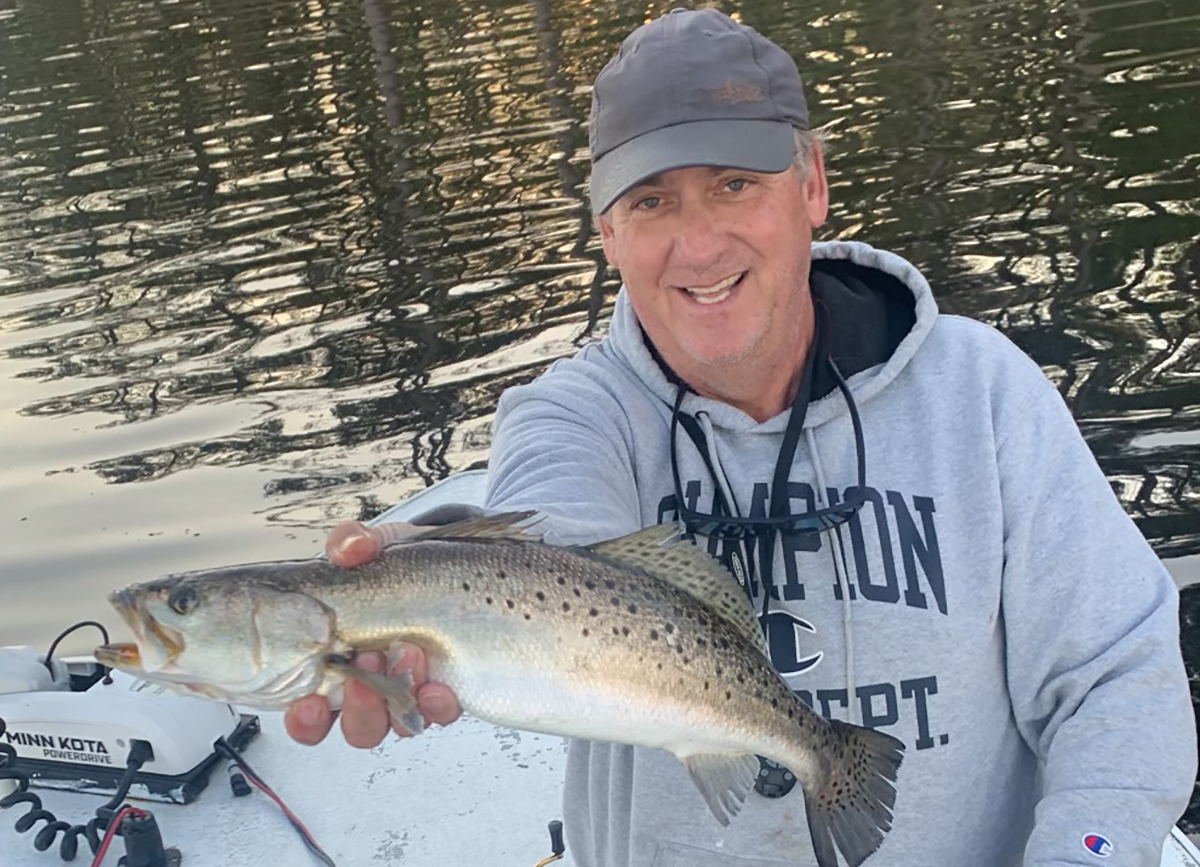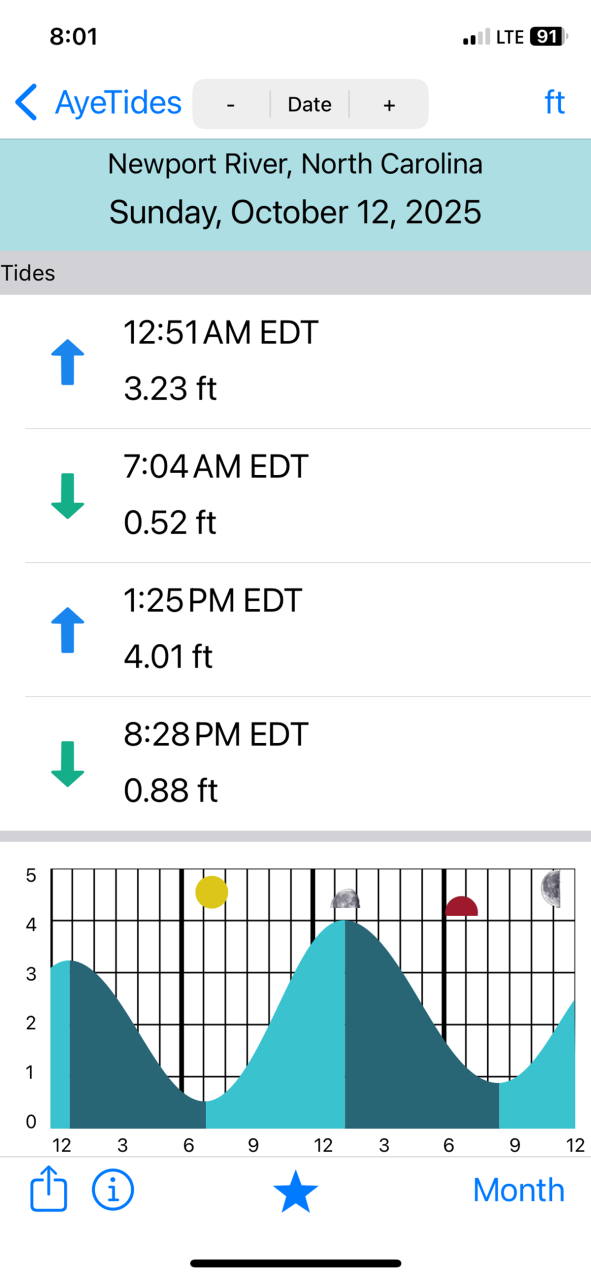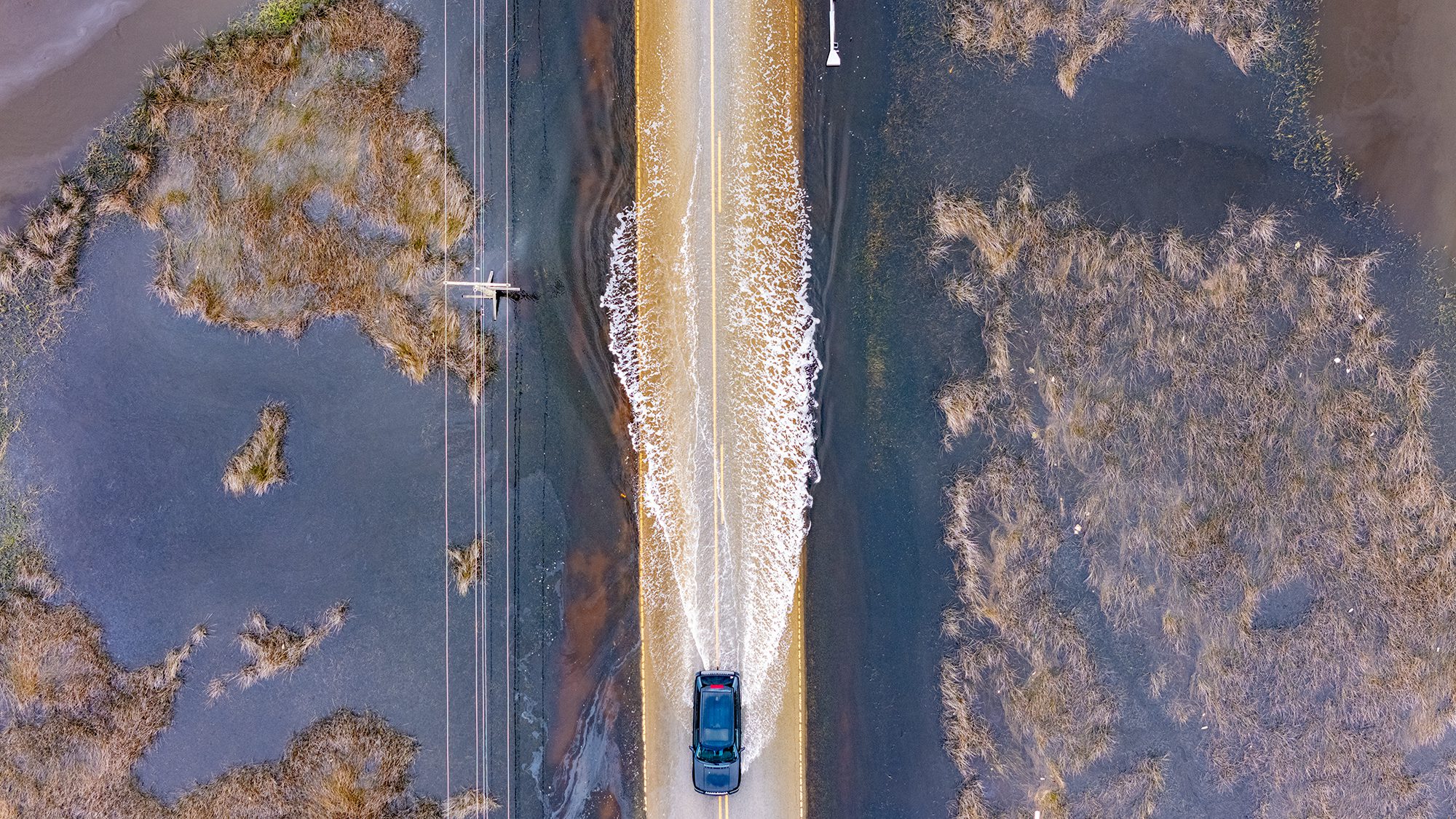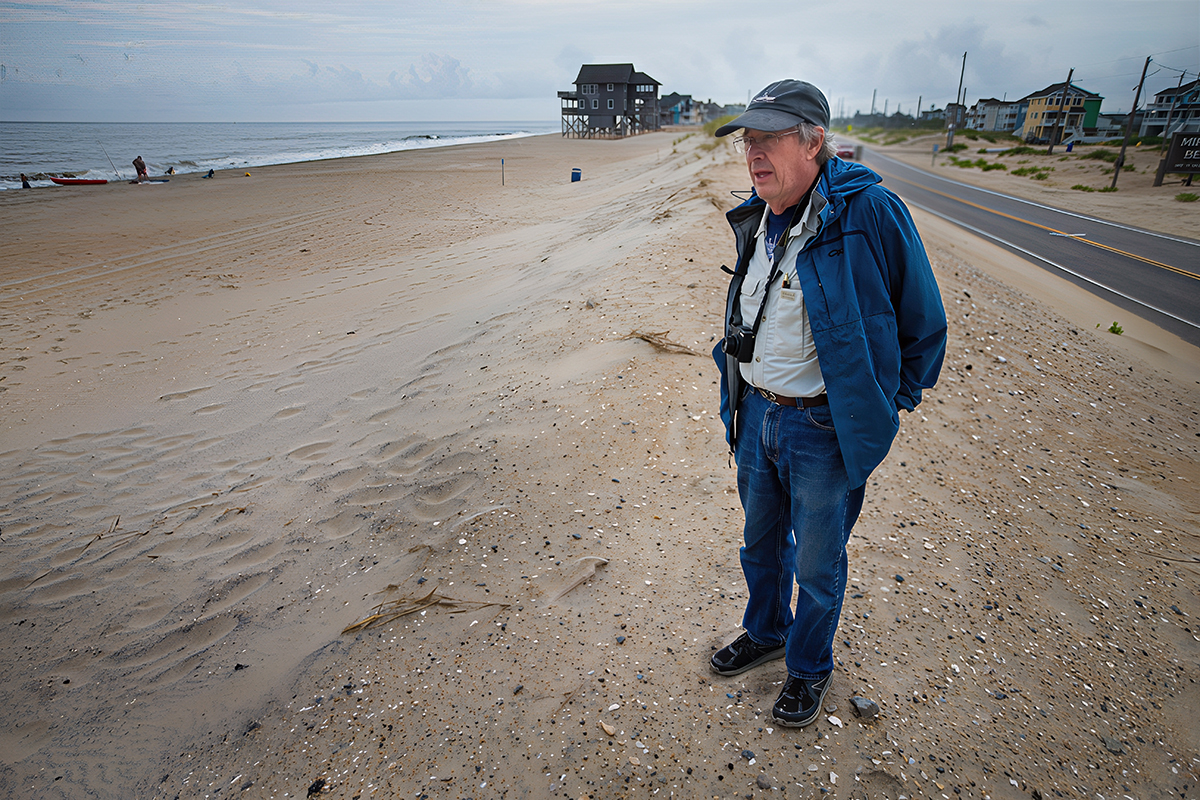
Someone fishing in saltwater should understand tides. More importantly they should understand how tides affect the fish they are pursuing.
It’s a common story: A person heads down to the water and drives out to a spot somewhere that they were told about. They get there and fish are jumping all over and eating everything they throw at them.
Supporter Spotlight
Next weekend comes and they head right back to the same spot. Except this time the tide is so low they run aground three times before they arrive. When they finally get there, the water is all gone, the bottom is exposed, and there’s no fish anywhere. What changed? The tide.
Let’s take a look at a typical fall day by my home near the Newport River and Morehead City. First thing we notice is that I use a tide-predicting app from Hahn Software called Aye Tides. It’s a part of the very first tide software called X Tides. Since the product was developed in 1995, it’s become as close to the industry standard as there is. It was based on an early computer model originally developed in the 1930s.

Now take a look at the numbers and see what they mean. First you will see a time and number with a decimal and a unit of measurement. The time shows what time the tide will occur and the number represents the relative height. In our case, the first high tide will occur at 12:51 a.m. Since we are not going fishing until after dawn this is not that important to us now.
The first low tide is at 7:04 a.m. Our plan is to fish the channels in the Newport for speckled trout. The best is on the rising tide with the influx of clean water. Pete Allred, formerly the owner of Pete’s Tackle for many years, used to say that often the bite would shut off, “like a switch” when the tide turned.
We want to get out there early. This is tricky. If you’re experienced and know the channels, you can get back there early and be the first one there. This often leads to some fast action. Once the water gets high enough to allow more access, others may join you, including some who may not be very considerate.
Supporter Spotlight
I have a certain young man in mind who I’ve had numerous run-ins with over the years, who would run full-speed through where I was fishing — literally so close he would swamp my small skiff. We’ve had words and he knows who he is.
But if people are considerate, the action will continue through the incoming tide, and assuming that people know what they’re doing, there should be enough to go around.
The second high tide is at 1:25 p.m. Let’s also take a look at the height. This is the average depth of the water as measured at the time of high tide. Notice that the number is 4.01 feet. This is quite a high number for our area. If we look at the moon phases as indicated by the icons, we can see that there was a full moon last night. The full moon in October will have some of the highest tides of the year. Often called “king tides” by the Weather Channel people and some scientists, there will often be swamped roads in the really low elevation areas.

This extremely high water leads to a couple different things for us to look at as anglers. Red drum will be as far back in there as you can see water. The fishing is not easy and takes some skill, but is extremely rewarding (and will be the subject of an entire separate article). Another thing to be aware of is very fast current, which can create fast action on the rise, as we have already seen with the trout, and flounder will often be quite aggressive around bars and points. Very large fish will be caught.
This is the important thing to remember: The large amount of movement around the very high tides will get fish activity to peak. But if you are not aware of the timing, you can miss the whole thing.
This cycle of two high tides and two low tides per day is called semidiurnal. Two tides per day. It’s Latin or some other thing. Some places will only have one per day. These are called diurnal.
Another thing that can really affect your fishing is something called negative low tides. This will be indicated in your app by a minus sign next to the height of the tide at low tide. This happens often in winter. It can be a hazard to navigate because areas that are usually underwater could be dry.
Now let’s return to the day we started with. As the tide starts to go out, it is usually a good idea to head toward the inlet. As the water recedes, it will encourage fish to begin feeding on baitfish that get moved out of the marsh and we will often see nice activity on surface feeding bluefish, mackerel and false albacore, as well as sea mullet and gray trout, while bouncing bottom.
This is one of the best places to start fishing for any species in any place. If you don’t know anything else, fish inlets on outgoing tides. Sometimes the end of the ebb will see the fiercest action. Then it will kind of peter out.
As always, this was just an example of how to approach a specific situation. Remember that being aware of the tides gets you to the fish. “Time, (fish) and tide wait for no man.”







